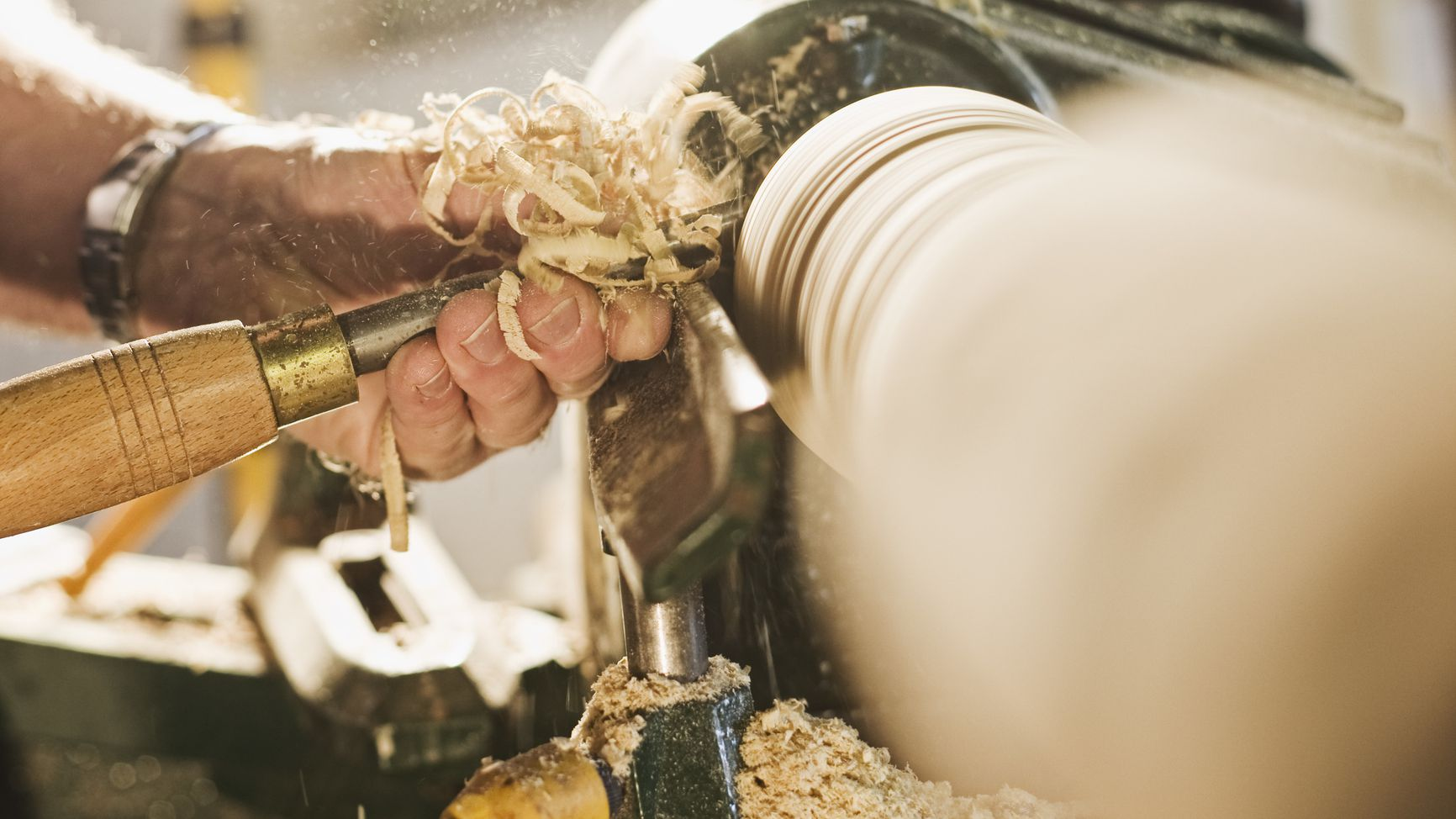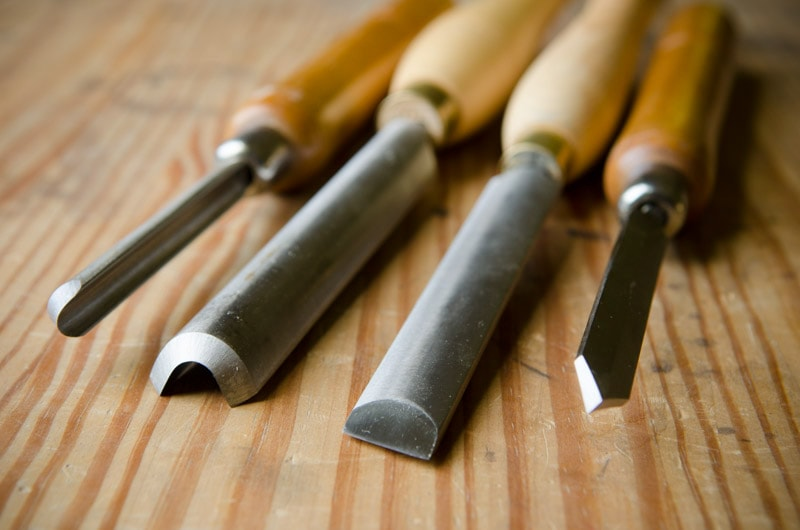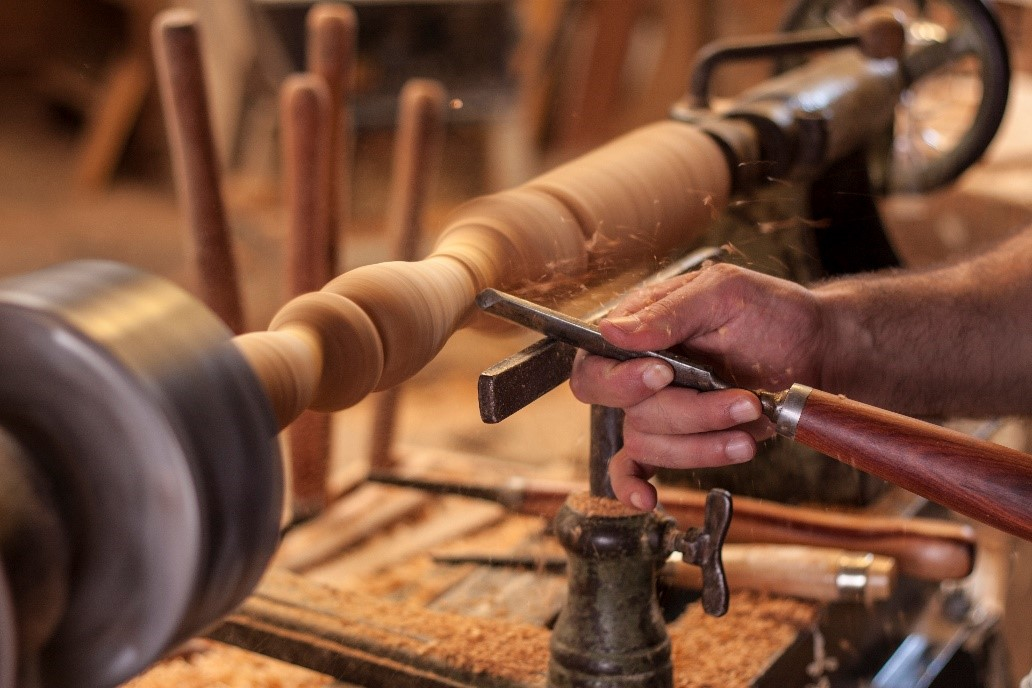Few handcrafts speak so highly of personal pride or skilful artisanship as woodworking does. From the casual beginners to the master craftsmen, they all share the same goal: the desire to transform an ordinary blank of wood into something that’s both beautiful and unique. It takes a lot of time, patience, and ultimately practice to hone that kind of skill, though. It’s a process of learning how planning, knurling, sanding, and a host of other techniques can be combined to create stunning pieces of woodwork.
It also requires a mastery of the instruments of the trade: especially ones intended for use with turning equipment. Lathes are arguably the most important piece of turning equipment available to woodworkers; not least of all because so many of those traditional woodworking techniques can be applied to using one. Lathes, however, require the proper forming, shaping, and cutting tools to deliver their best. There are a lot of them though, so if you’re considering buying a lathe and delving into the world of woodworking, you’ll need to become familiar with these tools even before you turn your first piece of wood.
Irreplaceable Gouges

There are 2 types of turning done on lathes. There’s spindle-type turning where wood blanks are centred and spun between a pair of mounting points, and there’s faceplate-type turning where blanks are suspended and spun from a single mounting point. The type of turning you’re doing will ultimately determine which woodworking hand tools, or gouges, you’re going to need to get the job done. Gouges are standard woodworker’s chisels, but designed specifically for use with lathes.
They’re longer and mostly curved, however, allowing them to be positioned against a lathe’s rest, and angled or rotated to achieve the desired cut. They’re irreplaceable tools for wood turning; and suffice it to say, with the right combination of gouges and technique, a plank of wood can be carved and contoured into anything from a simple set of bowls, to the most delicately turned, multi-axis table legs imaginable.
A Handle on Unhandled Gouges
Yes, that’s correct: they’re regularly sold without handles. So the question is, why would anyone want to buy wood-turning tools without handles? One reason is that it allows turners to separately purchase interchangeable handles. The main reason, however, is that a lot of turners simply enjoy the process of turning their own custom handles. Turning one’s own handles also creates familiarity with the different characteristics of spindle- and faceplate-type gouges. Gouge consists of 3 parts, but they’re all unique to the type of turning being done.
The Shank
This is the milled and hardened steel body of the tool. With varying lengths, thicknesses and even curvatures available, their purpose is to remove wood as aggressively, or as intricately as you need.
The Flute
This is the concave central section of the tool. It can be U-, V-, or parabolic shaped, and it’s the flute’s depth and the radius of its wings (the height of the sides of the concave cutting edge) that determine the type of turning a gouge is best suited for.
The Bevel
The bevel is the sharpened, bladed edge of the tool that does the cutting. The shape and angle of the bevel are called its grind; and it’s the profile and degreed angle of the grind – along with the wing size – that decide just how crisply your woodworking tool is capable of cutting. Getting to know the parts is integral to selecting your gouges; because again, the type of turning you’re doing determines which types of gouges are needed to produce the desired result. It only takes a small assortment of turning tools to tackle even the most delicate jobs though, so let’s look at them briefly.
Spindle Turning Gouges

There are 4 basic kinds of spindle turning gouges, and they’re all designed to carve blanks and dowels along the grain of the wood when they’re centred horizontally between the points on a lathe.
Spindle Roughing Gouges
Roughing gouges are the largest and widest of the wood lathe tools. They’re deeply fluted and used to quickly remove large amounts of wood, even from square blanks, to create the basic, “rough-shaped” cylinder that you’ll want to work with.
Detail Spindle Gouges
These gouges are used to perform the more detailed cutting that rough gouges can’t. They’re easily identified by their shallower flutes and come in a variety of bevels that are suitable for all kinds of detailed cuts, including coves, curves, and beads.
Skew Gouges
Skew gouges, including bedan tools, are ordinarily sharp, flat-tipped blades with angled cutting edges. With variations that also include curved cutting edges, however, they can be used for cutting tenons and convex shapes, as well as planing and smoothing.
Parting Tools
Although these woodworking tools are designed to physically separate finished projects from the remaining wood blank, they can also be used to produce a variety of scraping and shearing cut details.
Faceplate Turning Gouges
There are 3 basic kinds of faceplate turning gouges, and they’re designed to hollow out wood blanks whose grain runs perpendicular to its mounting point on a lathe.
Bowl Gouges

Bowl gouges are the extremely versatile combination/equivalent of roughing and spindle gouges for faceplate turning. Their deep-fluted blades allow them to make deep, aggressive cuts either on the inside or outside of a blank.
Hollowers
Hollowers are a family of tools for wood turning that include a range of straight and curved instruments, as well as carbide-tipped square and swan neck variations that are designed specifically to clean the insides and recesses of bowls and other objects.
Scraping Tools
Scraping tools come in round and square-nosed variations, and use their burred edges to smooth out the cuts left by bowl gouges, hollowers, or other imperfections.
The Final Word
At the end of the day, as turners become more comfortable with their skills, it’s only natural for them to want a larger selection of tools at their disposal. And as a turner, you too are very likely to want to have several versions of the same kinds of tools but with different profiles and bevel angles.
When it comes to performing intricate lathe work though, regardless of whether it’s spindle- or faceplate-type turning, you simply have to have a quality selection of gouges and woodworking hand tools available to create the most exciting works possible. It’s easy to tap into your inner craftsman once you have a lathe, and the sky’s the limit to your creativity when you have the right selection of gouges.



